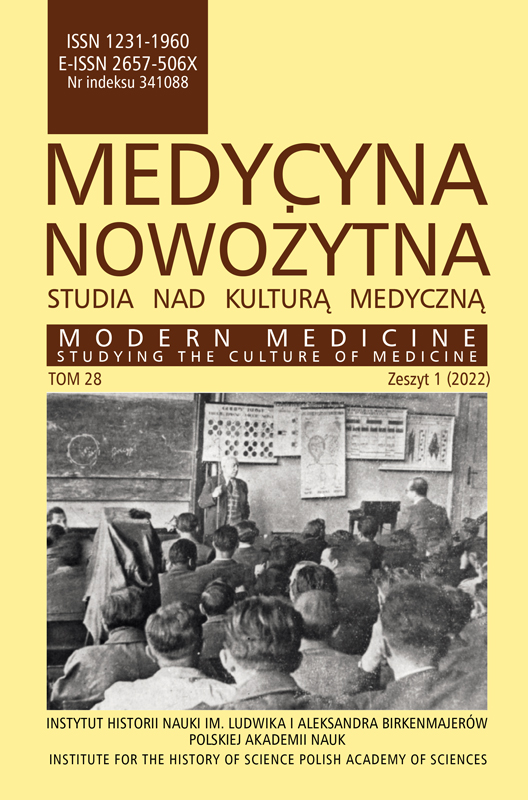Lekarze i chirurdzy w Szpitalu Świętego Ducha w Rzymie w XVII–XVIII wieku
Doctors and surgeons at the Hospital of the Holy Spirit in Rome in the 17th – 18th centuries
Author(s): Marian SurdackiSubject(s): History, Sociology, Local History / Microhistory, Social history, 17th Century, 18th Century
Published by: Wydawnictwo Uniwersytetu Jagiellońskiego
Keywords: Holy Spirit Hospital; Rome; canons; doctors; surgeons; nurses; students; medicine; surgery
Summary/Abstract: Founded in 1198 by Pope Innocent III, Europe’s largest Hospital of the Holy Spirit in Rome, run by the Order of Regular Canons of Saint Duicha, became a model for other such institutions. It performed two functions: an asylum for foundlings (brefotrophium) and a hospital-clinic for the sick, the so-called the infirmary, in which there were about a thousand in certain periods, especially during epidemics, the sick inmates specialized in the treatment of people with fever, especially those with malaria, as well as injured and requiring surgical operations. The rank and size of the hospital was evidenced by the number of outstanding doctors and surgeons, unprecedented in other European hospitals. In some periods of the eighteenth century, there were nearly twenty of them in the hospital in total, but as a rule, there were always at least four chief physicians and two chief surgeons, as well as four assistant physicians and two deputy surgeons. Moreover, when the number of patients increased, additional doctors and surgeons were hired, often working for free in the hope of obtaining full employment.Among doctors, it was possible to meet specialists of the highest class, not only combining medical practice with teaching, but also authors of outstanding works and scientific treatises in the field of medicine, philosophy and law, written on the basis of observations and experiences as well as conducted scientific research. Many doctors and surgeons working in the hospital were also papal doctors. Engagement to work in the hospital took place through public competitions. It is interesting that most of the medical and surgical staff came from very distant places and even foreign countries. All doctors and chief surgeons were hired to work at the Holy Spirit Hospital as graduates of universities and other institutes or academies. As for the six surgeons, especially their deputies, nearly all were educated and practiced in the Holy Spirit Hospital. Chief doctors, called professors and sometimes lecturers, had a hierarchical priority and supervisory position among the medical community. The latter term mainly referred to doctors and surgeons teaching at the Hospital’s Academy of Surgery, later the School of Surgery, where the nurses working in the hospital learned the art of surgery.The most important duty of the doctors and chief surgeons was to carry out twice a day (morning and after lunch) visits to patients in their departments. The visits ended at least half an hour before lunch or dinner so that the patients could be given medicines and treatments before eating. During the morning visit, the physician and the chief surgeon were accompanied by their assistants or deputies, who were on duty around the clock in the hospital, while their superiors lived outside the hospital.The fame enjoyed by doctors and surgeons has not always translated into the reliability and effectiveness of the medical services they provide in the hospital. Many of them did not pay much attention to their work. They did not fulfill the duties entrusted to them, did not come or were late to work, handed over their tasks to doctors and lower-ranking personnel, kept employment and salaries despite reaching old age and poor physical condition, preventing them from properly performing their professional duties.
Journal: Medycyna Nowożytna Studia nad Kulturą Medyczną
- Issue Year: 28/2022
- Issue No: 1
- Page Range: 11-52
- Page Count: 42
- Language: Polish

